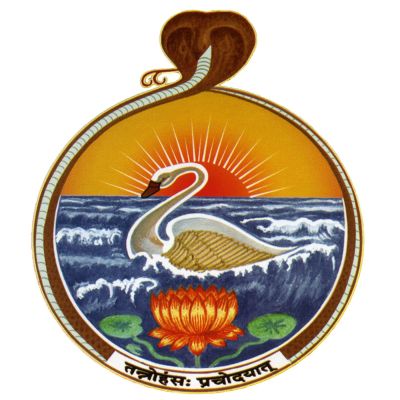Swami Tattwamayananda, currently the Minister of the Vedanta Society of Northern California, San Francisco, (originally founded by Swami Vivekananda in 1900) served in various centers of the Ramakrishna Order in India as editor, publisher, and teacher of Sanskrit, Advaitic texts such as Sri Shankaracharya's commentaries on the 'Prasthanatraya' (the fundamental Sanskrit texts of Vedanta philosophy), Buddhism and Indian philosophy. He underwent traditional training in Hindu scriptures, Sanskrit, Vedic and Vedantic literature for many years, from his early days. Before coming to the United States in January 2012 he was teaching Sanskrit, Vedantic scriptures and Indian philosophy at the Training center in Belur Math, the institution that trains the monks of the Ramakrishna Order at the headquarters of the Ramakrishna Mission, Kolkata, India. Apart from his traditional education, the Swami has also received modern University education in English literature, psychology, European history, and Western philosophy. He is frequently invited for lectures on Yoga, Vedanta, and traditional Hindu scriptures and for participating in interfaith dialogues.For more:Web: www.sfvedanta...
https://www.spreaker.com/show/featured-lectures
Vivekachudamani 4 | Recognizing the Ideal Guru, Approaching the Guru, and Becoming Blessed | Swami Tattwamayananda
Verses: 31-35, 49-53
This lecture was given by Swami Tattwamayananda at Stanford University on June 2, 2019. The lecture was hosted by the Stanford Hindu Students Association.
-The highest bhakti ( is a natural effortless flow of the mind towards God. The six factors of surrender (शरणागति or प्रपत्ति) to God as described by Ramanuja are explained. For an advaitin, this bhakti is a means to the purification of the mind where Self-realization becomes inevitable.
-As we evolve, the divine qualities that we meditate upon enter into our own character and we begin to see unity everywhere. We are no longer able to do harm to anybody.
-The spiritual teacher, Guru, is the one who destroys our ignorance. Our spiritual nature is self-revealed. The analogy is that when a canal is cut, the water flows of itself.
-Some of the qualities of a perfect spiritual teacher are enumerated: 1)well-versed in the scriptures 2)sinless 3)teacher with no desire 4)a knower of Brahman 5) peaceful 6)with all desires burnt out 7)in possession of completely motiveless compassion 8)a friend who naturally and effortlessly helps those who seek refuge
-Real humility (प्रह्व) when approaching a teacher is not a slavish attitude but rather a polite dignified ability to stay one step below in order for wisdom to flow to the student.
-An aspirant will feel an inner discontentment because they have realized the reality of their bondage and the possibility of realizing something much higher. It is actually a positive attitude (मुमुक्षुत्व), not a wretched attitude.
-A strong warning is given that trying to practice sadhanas without respecting the teacher-disciple tradition (परम्परा) can lead to possible deviations or difficulties in spiritual life. The royal highway of following the teacher-disciple lineages is recommended.
-The seven great questions about reality are asked. The guru congratulates the student for becoming a genuine Vedantic aspirant and achieved their life’s purpose (कृतकृत्य). Their whole lineage has become spiritually uplifted, blessed, and purified by the aspirant. This displays the sacred dimension of family ties.
-The aspirant must make self-effort to remove their own spiritual bondage.
